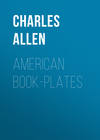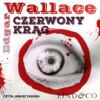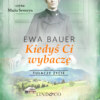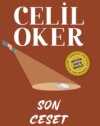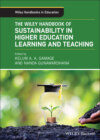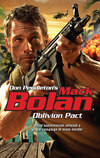Kitabı oku: «American Book-Plates», sayfa 13
Nec elatus nec dejectus. Neither overjoyed nor overworried. Thomas.
Nec gladio nec arcu. Not by sword or bow. Dudley.
Nec quaerere honorem nec sperne. Neither to seek nor to despise honor. Sargent.
Nec sorte nec fato. Neither by chance nor fate. Rutherord.
Nec spe nec metu. Neither by hope or dread. Read.
Nec te quaesiveris extra. Seek not beyond yourself. Harison.
Nec timeo nec sperno. I neither fear nor despise. Greene.
Nemo nisi Christus. Nothing unless Christ. Apthorp.
Never check. Hawks.
Never despair. Pintard.
Nihil me tangere. Nothing smirches me. Stearns.
Nil conscire sibi. To have a conscience free from guilt. Prescott.
Nil desperandum. Never despair. Shepheard. Sheppard. Stewart.
Nil facimus non sponte Dei. We do nothing but by the will of God. Atkinson.
Nil sine Deo. Nothing without God. Waldo.
Nil sine magno vita labore dedit mortalibus. Life gives nothing to mortals without great labor. Evarts.
Nil utile quod non honestum. Nothing useful that is not honest. Smith.
Nobilis ira. Noble in anger. Stewart.
Nocturna versate manu, versate diurna. (Hor.) Ponder night and day. Robbins.
Non est vivere sed valere vita. Not living, but health, is life. Moore.
Non flectere a vero. Not to be moved from the truth. Livius.
Non incautus futuri. Not heedless of the future. Lee.
Non nobis solum. Not for ourselves alone. Drayton. Eliot.
Non oblitus. Not forgotten. McTavish.
Non reverter invitus. Reluctantly I do not return. Jenkins.
Non sibi sed aliis. Not for himself, but for others. Olmsted.
Non sibi sed patriae. Not for himself, but for his country. Hill.
Non vi sed voluntate. Not by force, but good will. Boucher.
Nosce te ipsum. Know thyself. Edwards. New York Society Library.
Not always so. Barrell.
Nulla pallescere culpa. To turn pale from no crime. Byrd.
Nulli praeda. A prey to no one. Deane.
Nullus in verba. (Hor. Ep. Lib. I. i. 14.) At the dictation of no man. Maxey.
Nunc mihi nunc alii. Now for myself, now for another. Wormeley.
Nunquam non paratus. Never unprepared. Johnston.
Occasionem cognoscere. To perceive the opportunity. Lowell.
Omnes fremant licet dicam quod sentio. Though all rage, I shall say what I think. Smith.
Omni fortunae paratus. Ready for any fortune. Forbes.
Omnia Deo pendent. All things depend on God. Stockton.
Omnia relinquit servare rempublicam. He leaves all to serve the state. Tuberville.
Par espérance et activité nous surmontons. By hope and work we overcome. Gorham.
Par pari. Equal to my equal. Wall.
Patior ut potior. I endure as I can. Spotswood.
Patria cara carior libertas. Dear is country, dearer is liberty. Brown. Clinton. Marchant.
Patria veritas fides. Country, truth, faith. Everett.
Pauper non in spe. Not poor in hope. Poor.
Pax et amor. Peace and love. Backhouse.
Pax et copia. Peace and plenty. Jones.
Pax hospitia ruris. Grateful peace of the country. Jones.
Pax in bello. Peace in war. Prioleau.
Pax quaeritur bello. Peace is secured by war. Oliver.
Pectore puro. With a pure heart. Royall.
Pelle timorem. Drive off fear. Whatley.
Peperi. I have brought forth. Pepperrell.
Per aspera ad astra. Through trials to glory. Johnson.
Per varios casus. By various fortunes. Mercer.
Perge coepisti. Go on as you have begun. Ten Broeck.
Perit ut vivat. He dies that he may live. Fenwick. Magill.
Persevere. Gallatin.
Pia mente studeatur. Study with reverent mind. Phillips Academy.
Piety is peace. Hopkins.
Post tenebras speramus lumen de lumine. After the darkness we hope for the light of the day. Coffin.
Postero ne credo. Trust not the future. Cutting.
Praestat opes sapientia. Wisdom excels wealth. Livingston.
Pro aris et focis. For our altars and our firesides. Bloomfield.
Pro Deo et nobilissima patria Batavorum. For God and my most noble country, Batavia. Van Ness.
Pro lege et rege. For the law and the king. Child. Hicks. Whitebread.
Pro libertate. For liberty. Provoost.
Pro patria. For my country. Wallace.
Pro patria mori. For country, die. Gardiner.
Pro patria semper. Always for my country. Fitzhugh.
Pro rege et patria. For the king and fatherland. Champion.
Probitas laudatur et laget. Honesty is praised and is left to starve. Antill.
Probitate et industria. By honesty and industry. Bridgen.
Procurator industria. Industry the chief. Fraunces.
Progredi non regredi. To advance, not to recede. Rutledge.
Propere et provide. Quickly and carefully. Robinson.
Proprium decus et petrum. Powel.
Prospicere quam ulcisci. Overlook rather than avenge. Maingault.
Providentia sumus. We are providence. Blatchford.
Prudenter et simpliciter. Discreetly and simply. Vaughan.
Pugna pro patria libertas. I fight for the liberty of my country. Martin.
Qui contentus felix. Happy he who is content. Smith.
Quicscit in perfecto. He rests in labor completed. Linonian Society Library.
Quo cunque ferar. Whithersoever I may be carried. St. Clair.
Quo fata vocant. Where the fates call. Bay. Erving. Vose.
Quo vocat virtus. Where virtue calls. Jauncey.
Quod fieri non vis alteri ne fueris. Do not that which you would not wish another to do. Cock.
Recte et suaviter. Justly and mildly. King.
Recte faciendo securus. Safe in acting justly. Inglis.
Refero. I bring back. Wall.
Respice finum. Regard the end. Mcmurtrie.
Reviresco. I become young again. Maxwell.
Robori prudentia praestat. Discretion is more than strength. Young.
Rosae inter spinas nascunter. Roses are found among the thorns. Thorndike.
Sacra quercus. Holy oak. Holyoke.
Saepe pro rege, semper pro republica. Often for the king, always for the commonwealth. Vassall.
Sans changer. Without changing. Musgrave.
Sans Dieu je ne puis. Without God I cannot do it. Skipwith.
Sapienter si sincere. Wisely if sincerely. Davidson.
Secundis dubiisque rectus. Upright both in prosperity and perils. Wythe.
Seges votis respondet. The crop responds to the prayers. Hasty Pudding Club Library.
Semper caveto. Be always on guard. Ball.
Semper fidelis. Always faithful. Schuyler.
Semper idem. Always the same. Clark.
Semper paratus. Always prepared. Dunning. Everdell. McCoun. Hopkinson.
Serva jugum. Keep the yoke. Hay.
Simplius sicut columbae. More harmless than a dove. The Bishop of Jamaica.
Sine Deo careo. Without God I want. Cary.
Sine virtute vani sunt honores. Without virtue, honors are vain. Bozman.
Sol sapientiae nunquam occidet. The sun of wisdom never shall set. Social Friends’ Library.
Sola bona quae honesta. Those things only are good which are honest. Hunter.
Sola salus servire Deo. The only safe course is to serve God. Burke. Jarvis. Morong.
Soli Deo gloria et honor. Glory and honor be to God alone. Boudinot.
Solus minus solus. Alone yet not alone. Muhlenberg.
Sperne successus alit. Success nourishes, but to scorn. Gurney.
Spero meliora. I hope for better things. Livingston. Ludlow. Panton.
Spes mea in Deo. My trust is in God. Cabell.
Spes meliora. The hope of better things. Panton.
Spes vincit terrorem. Hope conquers all fears. Winthrop.
Stand sure. Grant.
Strive for glory. Vavasour.
Study to know thyself. Greene.
Stultum est in foro sigtare. It is foolish to shoot arrows in the forum. Unidentified Plate.
Sublimiora petamus. Let us seek loftier things. Bancker.
Sublimis per ardua tendo. To the heights through hardships I tend. Chauncey.
Sursum corda. Hearts upward. Bancroft.
Sustinere. Bear. Brooks.
Take fast hold of instruction; let her not go, for she is thy life. (Prov. iv. 13.) Philadelphia Apprentices’ Library.
Tandem vincitur. At length he is conquered. Morris.
Tantes da dir. Rutgers.
Tentanda via est. The way must be tried. Wetmore.
Terra aut mari. By land or sea. Parke.
The North against the World. Edwards.
This I’ll defend. McFarlan.
Toujours le même. Always the same. Giles.
Toujours fidèle. Always faithful. Horry.
Toujours prest. Always ready. Carmichael.
Tout en bonne heure. All in good time. Hicks.
To Virtue & Science attend,
And Truth & Justice defend. Newberry.
Transiens adjuvanos. Crossing the sea to help. Society for Propagating the Gospel in Foreign Parts.
Trust in God. Jones.
Try. Brazer.
Tutus si fortis. Safe if brave. Smith.
Ubi libertas ibi patria. Where liberty prevails there is my country. Dinwiddie. Weiberg.
Ubi plura nitent paucis non offendar maculis. Where the most is bright, let me not be offended by a few spots. Walker.
Ubi plura offendar maculis nitent non ego paucis. Where the most is bright, I shall not be offended by a few spots. Danforth.
Un loy, un roy, un foy. One law, one king, one faith. Herbert.
Ut aquila versus coelum. Like the eagle to heaven. Bowdoin.
Ut quiescas labora. Labor that you may rest. Gallaudet.
Utere mundo. Use the world. Blackley.
Utraque unum. With either one. Georgetown College.
Vera pro gratis. True rather than pleasing. Webster.
Veritas. Truth. Harvard College Library.
Veritas vincit omnia. Truth conquers all things. Waterhouse.
Vérité sans peur. Truth without fear. Petigru.
Verum atque decens. The truth and rectitude. Weld.
Verum dicet. He speaks the truth. Stanford.
Verus in actione consistit. Truth consists in action. Craven.
Vestigia nulla retrorsum. (Hor. Ep. i. I. 73.) No steps backward. Kip.
Vestra cura alitur. Nourished by our care. Social Law Library.
Vi et virtute. By strength and courage. Spaight.
Via ad cordem. The way to the heart. Wisner.
Victoria aut mors. Victory or death. Kip.
Videte et cavete ab avaritia. Recognize and beware of avarice. Pownall.
Vigila. Watch. Anderson.
Vigilemus ut vigilantis. Let us watch as those who are vigilant. U. S. Navy.
Vincit amor patriae. The love of country surpasses all things. Pennington.
“Vincet amor patriae laudumque immensa cupido.” – Virg. Æn. vi. 823.
Vincit omnia veritas. Truth conquers all things. Hyslop.
Vincit veritas. Truth conquers. Chambers.
Virescit vulnere virtus. Her virtue flourishes by her wound. Burnet.
This is also the motto of the family of Galloway, whose crest is a pelican in her piety.
Virtue, Liberty, and Independence. Pennsylvania Historical Society.
Virtus basis vitae. Virtue is the foundation of life. Bull.
Virtus durissima terit. Virtue bears the greatest hardships. McLean.
Virtus est natale meum. Virtue is my birthright. Tillotson.
Virtus est vera vetustas. Virtue is true old age. Van Rensselaer.
Virtus et scientia ad utilitatem dirigunt. Virtue and knowledge direct to usefulness. Moral Library.
Virtus interrita pergit. Virtue fearlessly advances. Moore.
Virtus, libertas et patria. Virtue, liberty, and country. Wetmore.
Virtus sibi munus. Virtue its own reward. Van Cortlandt.
Virtus sola nobilitate. Virtue by nobility only. Mayo.
Virtute et fide. By valor and faith. Roome.
Virtute fideque. By valor and faith. Murray.
Virtute invidiam vincas. Conquer envy by virtue. Cleborne.
Virtute patria tuemini. By virtue you guard your country. Pepperell.
Virtutem hilaritate colere. Cultivate virtue by mirth. Wynkoop.
Virtutis gloria merces. Glory is the reward of valor. Robertson.
Vitanda est improba Siren defidia. The impious Siren, faithlessness, must be shunned. Walker.
Vive ut vivas. Live that you may live. Abercrombie.
Waste not a moment. Wethersfield Library.
What is, is best. Laurens.
Wisely for pleasure and for profit read: thus hold high converse with the mighty dead. Woodbridge.
Y cadam ae cypwyn. The mighty and cunning. Williams.
Zyt bestindig. Be constant. Dyckman.
A FEW RECENT EXAMPLES
ALL book-plates which do not have the flavor of age about them, and which were made quite within the memory of the collector, are classed as recent plates. This is a term of doubtful application; but in a general way it has come to mean all plates made since about 1830. Their number is legion, of course, and no attempt is here made to enumerate them, or even a small part of them, but only to note briefly those of the more recent additions which are especially noteworthy. And now we part with the old styles of plates. The early armorial, with the profuse denticulated mantling, is never used, the pure Jacobean is not seen, the graceful Chippendale has been discarded, and the Ribbon and Wreath, with its fanciful festoons and garlands of roses, is also a thing of the past.
This is of course natural, as the armorial plates, which are the only ones demanding any of these styles of decoration, are very little used now. But we have still the Library Interior, the Literary, the Pictorial, and the Allegorical; but these have changed their appearance so much
as to be hardly recognizable as the lineal descendants of those of the same type which went before. Indeed, the recent plates have little in common with the old, – new motives, new designs, new methods, and new conceptions of what a book-plate can be have come in, and the change produced is very marked.
Heraldic plates are still in use, and still being made, but the number of plain armorials is quite small. Usually, now, those who wish to show the family arms on the book-plate do not display it all by itself, but accompanied by literary accessories, or pictorial, or with decorative features to relieve what would to-day appear a bare and unfinished plate, but which in the older days would have been the pink of perfection.
Among the plain armorial plates of recent days may be mentioned that of Henry B. Anthony, the late senator from Rhode Island, which, without even a motto, presents the arms of the family, with the crest, and the name. Another plain armorial plate is that of John H. Buck, of the Gorham Manufacturing Company, and the author of “Old Plate.” This, too, is perfectly plain, with no motto. Frank House Baer and Charles W. Burrows, of Cleveland, both use the plain armorial style, relieved by slight mantling or scroll work, and with the mottoes on ribbons beneath the shield. Mr. Appleton Morgan has a plain armorial plate, quartering the Morgan and Appleton arms. Mr. Daniel Ravenel, of Charleston, also uses a plain armorial shield, relieved with sprays of marigold (the Huguenot emblem) and of wall-flower (the French name for which is Ravenelle). A plain armorial plate, in colors, is used by the compiler of “America Heraldica.” An imposing helmet with blue mantling surmounts the shield, and the motto, Moins faire mieux faire, is given on a ribbon which encloses the whole design. Harry Allen Castle, of Hartford, uses a design borrowed from the plate of Mr. Thomas Bailey Aldrich. The castle on its wreath is enclosed by a square frame in which the name appears, with the words His Mark. In the corners of this frame are the letters I.H.S.V., standing for the motto, In hoc signo vinces. A punning friend, upon seeing this plate, remarked to Mr. Castle, that the letters would seem to mean, “I have some volumes.” Dr. J. S. H. Fogg, the late well-known collector of, and authority on, autographs, used a plain armorial plate, with the motto, Aut pax aut bellum. Prof. J. Max Hark, of the Moravian Seminary at Bethlehem, Pa., has a plain heraldic plate, with thin mantling about the shield. The motto occupies two lines above and below the shield, and is in imitation of the ancient manner. What mon an Honeste Namen doth owen, Too hym rycht glaedlie myn Bookes i loan. But so too longen ye Bookes be kepit, He shal forsooth be a Knave yclepit. This is printed with red capitals, on very fine parchment paper with rough edges, and is a very pretty plate. Dr. Joseph Henry Dubbs, professor in Franklin and Marshall College, uses a plate which exhibits the arms on a shield which is fastened to a spreading oak-tree.
At either side, scrolls are drawn, which bear the motto, Ex recto decus, and the following dates, which refer to the migrations of the doctor’s ancestors: Styria, 1446; Helvetia, 1531; America, 1732. A plate of unique history is that of The Rawle Law Offices, Established A.D. 1783, Philadelphia. This inscription is given on a circular band which encloses the shield of arms, and the motto, Morte, Virtute. Below this, the name of the successive proprietors of the law-offices are given, as follows: William Rawle, 1783-1836, William Rawle, 1810-1858, William Henry Rawle, 1844-1889, William Brooke Rawle, 1867. Melvin H. Hapgood, of Hartford, uses an oblong plate, which exhibits the shield of arms at the left of the name space, and which is surrounded by a fine running vine which bears both fruit and flowers, and among the twistings of which the motto, Inter folia fructus, is woven. The implements of the architect, and the secondary motto, Penna ferro potentior, are also cleverly worked into the decorative frame. Monsignor Seton, D.D., of Jersey City Heights, uses a
small heraldic plate, in which the arms are given in colors, and are surmounted by the clerical hat and tassels. A plain armorial plate is used by John F. Winslow, a descendant of Governor Winslow, and one to whose means and energy we owe the building of the first “Monitor.” Prof. Charles Eliot Norton, of Harvard, uses an heraldic plate, in which the crest only is given. Beneath this, a pile of books is covered by a scroll, which bears upon it the motto, Amici et amicis. The Rev. Morgan Dix, of Trinity Church, New York City, uses an heraldic plate, in which also the crest only is given. This is surrounded by a circular garter, on which the motto, Quod dixi factum est, is printed. This ends our list of plain armorial plates.
Whatever sarcasm and disgust may be stirred up by the assumption of arms by persons not entitled to them, no word can be said against the display of authenticated arms upon the book-plate. Many coats-of-arms run back for several centuries, and an honored ancestry has borne them. A rightful pride in such memorials of past family history induces many who are entitled to them to use their arms thus; and while the plain armorial plate has had its day, and has passed the stage of wide popularity, it is still in use.
Coming, now, to the Library Interior style of book-plates, we mention first the finest example of recent work in this style, – the plate of Richard C. Lichtenstein, of Boston. Mr. Lichtenstein is one of the old collectors of plates, a member of the Council of the Ex Libris Society of London, and a recognized authority upon American plates. As we would expect, he has indicated his hobby in all details of his design. The scene is laid in the corner of the owner’s den, in which are well-filled shelves, framed prints, photographs, and the usual accessories. In the immediate foreground, a Cupid is seated at a desk, and in his outstretched hand holds a plate upon the globe which stands at hand, while he reads, from an open book, the description, presumably, of the treasure lately acquired. Two other Cupids are at his back: one bearing the Journal of the Ex Libris Society, and the other returning from a successful quest for plates, if we may judge by the packet under his arm. The presence of the globe indicates the cosmopolitan character of the collection the Cupids are examining and adding to. A finely foliated border surrounds the interior picture; and in a space at the right side is a package of mounted plates; and on the left, a tied-up bunch of book-covers, in which Mr. Lichtenstein keeps his plates. The name appears in white letters upon a black scroll at the bottom, and behind it is seen a castle of white stone, – a play on the name of the owner. The plate is dated 1893, and is signed by the engraver, George Moore, and the designer, L. Y. Van Tiffele.
The plate of James Phinney Baxter reveals a most pleasing interior, which is probably from the actual room. A tall clock is flanked by long rows of books, a table and easy-chair are in the
foreground, and bric-à-brac is disposed upon convenient shelving. At the left of the picture, a portrait of the owner is given, with a fac-simile of his autograph. The following motto, Who learns and learns but does not what he knows, Is one who plows and plows but never sows, is also given in fac-simile of handwriting.
The plate of William Vanamee shows what is also an actual interior, probably. The stairs enter the room at the left, and the space under them is occupied by books. Pictures adorn the walls, and a cosey bench before the shelves invites the visitor to recline and read. The motto, Carpe diem, is given above the picture, and the name below, both in fac-simile of handwriting.
Actual comfort and enjoyment are expressed in the plate of Louis J. Haber, of New York City. In this interior, a fire is blazing on the andirons; the drowsy dog lies asleep before it; the hanging lamp sheds a brilliant light over the room, and furnishes the means of reading which the owner is enjoying, as he sits in an easy chair, in lounging-coat and slippers. The rows of books at the far end of the room add to the effect of comfort, and the motto which envelopes the whole design —My silent but faithful friends are they– discloses the attitude of the owner towards his volumes.
The plate of Albert C. Bates, of the Connecticut Historical Society, at Hartford, is a reproduction of an early woodcut which represents the interior of an old library (University of Leyden, 1614), with long rows of books chained to their desks. Globes are protected by brass covers, the patrons salute each other in apparent silence, and over all there is an air of repression and elevated learning. No seats are provided, and light is admitted through long windows filled with small lozenge-shaped panes of glass.
The beautiful colored plate of Gerald E. Hart, of Montreal, represents the interior of a cell in some mediæval monastery; for the tonsured monk is sitting upon his stone bench, illuminating a large volume. The Gothic window admits light through its highly colored design, and rows of vellum lie beside the desk of the old monk.
The plate of W. E. Baillie, of Bridgeport, Conn., represents a corner of a modern library, furnished in the Louis XV. style, having some half-dozen frolicsome Cupids, rolling on the rugs, peeking out of the window, reading in arm-chairs, or discussing the volumes taken from the elaborately carved case. This plate is the second one to make use of the half-tone process direct from the pencil sketch.
Continuing with the plates which come properly under the classification “Literary,” we find them to be very numerous, very various in design, and very unlike in shape and treatment. A plate which represents the past is used by Henry M. Brooks, of Salem, Mass. In this the old ink-pot and quill, the box of wafers, the wax and seal, and the sand for blotting are disposed about the letter, which, being used before the days of postage stamps and envelopes, bears the amount due and the address upon the back of the sheet. The address seen is that of the owner.
Going still further back in history E. Irenæus Stevenson has brought the very serpent of the Garden of Eden, with the fatal apple of Knowledge in his fangs, into his book-plate. Slipping down between the open pages of a large book, we see this form of his Satanic Majesty, and read upon the apple which he offers Eritis sicut Deus, Ye shall be as gods. This, from the Vulgate, is in Latin. Upon the open page we read in Greek, Be ye wise as serpents. The Shekinah blazes out all about the book. A very interesting and striking plate.
A very simple but effective reminder of the approach of old age is found in the plate of George Alexander Macbeth, of Pittsburgh, Pa. In this, an open book of coarse print lies upon the table, accompanied by a large pair of spectacles. The motto appears in the upper left corner, —Give me your favor: my dull brain was wrought with things forgotten.
Very many plates have a shelf of books, or a pile of them, accompanied with a favorite quotation, a bust of some author, the arms of the owner, or possibly his portrait. In the plate of Clifford Julius King, we see the row of books, the smoke from the waning cigar, as it rises across the open pages of a book, and the bust of Thackeray, while the motto, A jollie goode booke, whereon to looke, is better to me than golde, is suggestive of long evenings by the fireside, with choice editions to read and fondle.
The shelf of books in the plate of Nathaniel Paine, of Worcester, Mass., is enclosed within a frame which has suggestions of the heraldic shield. Behind it the palm branches are placed,
and the motto is below, on a ribbon, —Duce natura sequor. The crest is found in its place above.
“Wrenwood” is the name of the home of George E. Leighton, if we may judge by the name which appears on the top of the shield, which rests against his books just inside the library window. The window is open, flowers peek around the mullions, and a wren has hopped upon the sill to examine the surroundings which have borrowed his name for their own.
A pile of three books, labelled Bacon, Lamb, and “Punch,” is shown in the plate of David Murray. The legend, Some books are to be tasted, some to be swallowed, and some to be chewed and digested, is given on the back of the books. Above the volumes, the scales carrying the heavy pen on one side, and the lighter sword on the other, is surmounted by a liberty-cap, behind which, in a blaze of glory, appears the motto, The pen mightier than the sword.
In the plate of George Imbrie Sill, three shelves of books are enclosed within a frame of scrolls which bear the name. A shield is placed across one end of the case, with the arms and crest upon it.
Now we come to a plate which takes us below the surface. A wondrous mermaid, at the very depths, flanked by huge dolphins, is receiving a perfect shower of books, which come tumbling down through the water. This is the plate of H. W. Bryant, of Portland, Me.
Marshall C. Lefferts, of New York City, uses small leather labels on which an open book bearing his monogram is stamped in gold. Different colors of leather are provided for different volumes. This is the only instance of the use of leather for a book-plate in this country, if I mistake not: a very handsome material, too, for the purpose, and meriting wider use.
In the plate of John Herbert Corning, of Washington, Atlas, with strained muscles, supports the world of letters. Litterae is inscribed upon the immense globe which rests upon his shoulders.
Two children of the forest, a boy and a girl, with flowing hair and meagre garments, come towards us in the plate of A. L. Hollingsworth, of Boston, bearing between them a panel on which is carved the motto Un bon livre est un bon ami. The dense forest is close behind them, and were it not for the reader, one feels as if no person would pass their way to see their lofty sentiment. So thick, indeed, is the tangle of brush, that the loss of their clothes must be laid to their passage through it.
In the plate of Dr. George L. Parmelee, of Hartford, a herald in court costume is proclaiming, through his long trumpet, the loss of a book. The banner hanging from the horn shows the words he uses: Verloren! Verloren! ein Buch.
We are again taken far down below the waves, in the plate of William Ashmead Courtenay, of Charleston, S.C. Down indeed, to the very bottom of the ocean, where the weeds grow, and the dolphin feeds. Above, the waves are rolling, and a far stretch of water is seen. The view is enclosed within a square frame which bears the name.
The Rev. Wm. R. Huntington, rector of Grace Church, New York City, uses a design which is adapted from a frontispiece by Walter Crane for the “Fairy Tales” of the Brothers Grimm, and which represents a youth, with long curls falling from under his cap, opening the door of a house, with a huge key. Upon the roof, two cupids, in imminent danger of sliding off, are making music with lyre and voice. A few stars shine against the night, and the light of the moon falls across the face of the structure, revealing the huge orange-trees in fruit, which flank the doorway. The motto, In veritate victoria, is carved upon the steps, and the name Huntington is given at the very top of the design.
Other plates whose principal features are “bookish” are those of Henry A. Morgan, which has simply a large book, open, with blank leaves: on one is inscribed The page in waiting; of Edward Denham, which has an owl perched upon an open volume, upon whose pages are the following names, Bede, Camden, Bradford, Chaucer, Shakspere, Sandys, with the torch of knowledge and the wreath of victory behind it: the wreath is tied with a ribbon which bears the motto —Nulla dies sine linea: of Charles F. Jilson, Chicago, on whose plate simply a closed book is seen, with a palette resting upon it; the brush and the drawing tools reveal the art of the owner, while the half-covered lyre upon the book-cover may be an indication of his hobby; – of Alfred Trumble, of New York City, who displays a table whereon the bust of Minerva, the student-lamp, the scroll, ink-stand and quill, and the books jostle each other in delightful literary confusion; – of the Hon. John E. Russell, of Boston, who shows the owl of Minerva seated upon the books of the scholar: the globe, materials for writing, and the lamp of knowledge are disposed about, and the whole is encircled by an oval wreath of holly.
The plate of Thomas J. McKee, of New York City, represents a volume of Shakespeare’s Works, open to the title-page, which is occupied principally by a portrait of the famous author playwright. The arms and name appear upon the fly-leaf of the book, other books are at hand, and the following lines are given at the foot: —
Tu mihi currarum requies, tu nocte rel atra
Lumen, et in solis tu mihi turba locis.
The plate of Paul Lemperly, of Cleveland, designed by Garrett, shows the open book, with the serpent circled about it. The stars shine beyond, and the design is enclosed within a rectangular border of holly leaves.
Another class of plates which claim attention to-day is that which is representative of either the hobby or the vocation of the owner. For special collections, for certain kinds of books, plates are designed which express the particular line of reading, or of collecting, which they are to ornament. This style of plate is coming more and more into use, and earnest pleas have been put forth for its wide adoption; notably, one by Henri Pene Du Bois, in the “Book Lovers’ Almanac,” for 1894. In his worthy article on the “Art of the Book-plate,” this writer argues forcibly for the expression of a genuine idea in the book-plate. Not mere coats-of-arms, crests, pictorial designs or devices and ornaments which look pretty, seem to him suitable for use as book-plates, but an emphatic representation of an idea, a worthy idea, clad in suitable form. He argues for special plates for special collections, for a specific plate for a specific line of books; not an ornamental label simply, to be placed in each book in one’s library, but a different plate, with a reason for its existence, in each different department. Very few, if any, in this country, carry the idea so far; but many plates are now in use which convey at once an idea of the pursuit of the owner, whether it be in literature, art, science, or professional life. The plate of George Edward Sears, with its grinning skull, is perhaps at first glance unpleasant in its effect, but when one comes to unravel the plain meaning of the symbolism, the shudder dies away, and we are prepared to regard the plate as one of the very highest types, and most successful in its way. Mr. Sears has gathered a large collection of books relating to the “Dance of Death,” and finding in
